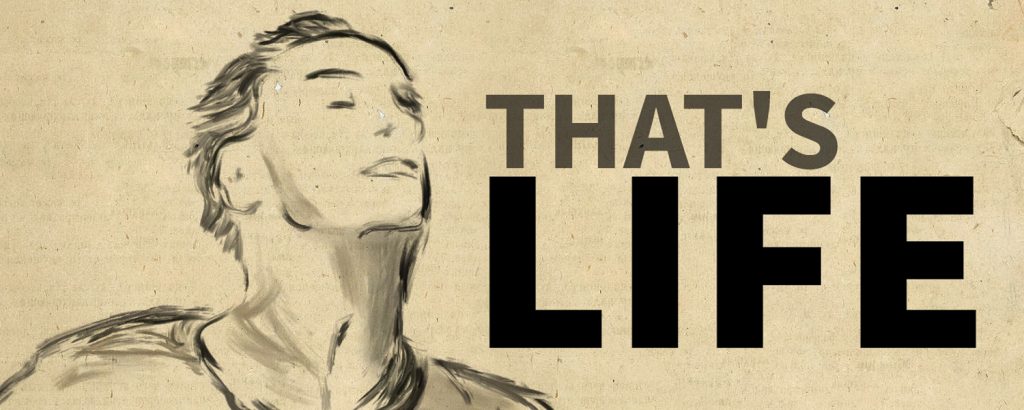
“Our greatest glory is not in never failing, but in rising every time we fail.” – Confucius
There is a scene in the movie “Chariots of Fire” that has stuck with me throughout my life. For those unfamiliar with it, the movie tells the story of British runners Harold Abrahams and Eric Liddell and their journey to the 1924 Olympics.
It’s most famous scene is probably the opener and the closer showing a large group of runners sprinting down the beach to the musical score, which earned an Oscar nomination.
However, the scene that sticks with me comes early in the film when Liddell falls at the beginning of a 400-meter race. For those unfamiliar with track and field, the 400 is one lap around the track. Typically, when an athlete falls in that race, they have no prayer of winning.
Liddell gets up off the ground, puts his head down and manages to outkick the other competitors to win. Just after the finish line, he collapses to the track, his lungs heaving from the effort.
A man watching the event, who later becomes Liddell’s coach, walks over to him, helps pick him up and has a succinct quote to sum up what everyone just witnessed.
“That’s not the fastest 400 I’ve ever seen, but it was certainly the bravest.”
A few years back, a local runner at Model High School dominated almost every cross country race. He often sported mismatched, colorful knee-high socks and used a swift punishing kick to devastate opponents.
Entering the state championship his junior season, Chris Akins, stood as one of several race favorites. At the end of the first mile, he held a solid lead over the field, but something happened.
A runner from Westminster set his sights on Akins, reeled him in over the next 2.1 miles and managed to hold him off for the state title. Akins finished as state runner-up.
Not many people would consider finishing at state runner-up a failure, and I’d agree. But not many people understand the feeling of having a state title in their grasp only to watch someone else wrest it fee.
Akins spent the next year working hard. I’m sure he had visions of the athlete who managed to best him for 365 days.
A year later, Akins arrived at the state championships with one goal. This time he had a smaller lead at the mile mark and made sure no one could pass him, crossing the finish line more than 20 seconds ahead of the second-place finisher.
In the late 1970s at Emsley Laney High School in Wilmington North Carolina, a precocious sophomore who stood 5’11” tried out for the basketball team. Although he had skills, the coaches felt his height or lack thereof was too much of a hindrance.
The player didn’t relish not making the varsity squad but instead of dwelling on the failure, he worked hard – harder than he had ever worked before. It didn’t hurt that he added about six inches of height either.
The next season the player made the varsity team and eventually got recruited and signed with the University of North Carolina, won a national championship with the Tar Heels and went on to become an NBA legend.
Michael Jordan has talked about the setback his sophomore year many times, and has said it might have been one of the best things that ever happened to him, because it fueled a fire that might never have been brought out if not for that temporary failure
U.S. Olympic speedster Dan Jensen became the focus of attention at the games in Calgary. In the 1984 games, Jansen had been a precocious 16-year older bound for greatness. He didn’t medal but placed well in the sprints.
In 1988, Jansen entered the Olympics as a favorite to win a medal in the sprints. Jansen learned hours before the 500 meters that his sister had lost her fight with cancer.
Jansen attacked the race like a demon but fell midway through the event. He suffered the same fate a few days later in the 1,000 meters, falling late in the race while on track to most likely grab the gold medal. Four years later, Jansen returned to the Olympics. He finished fourth in the 500 and 26th in the 1,000.
Although he continued to dominate in all other competitions, he had yet to secure an Olympic medal. In the 1994 Olympics, Jansen placed eighth in his best event the 500, leaving him one last chance to grab a medal in the 1,000.
For Jansen, the sixth time proved the charm as he sped to first place in the 1,000 not only capturing the Olympic medal which eluded him through four Olympics but finishing first atop the podium with the gold medal.
Watching Jansen win the gold medal in the morning hours in 1994 brought tears to my eyes, and I’m sure to many of those who had followed his story for almost a decade.
A couple of months ago many of us made promises to ourselves more commonly referred to as New Years’ resolutions. Maybe it was a goal to lose weight, get in better shape or make positive life changes. My sincere hopes are everyone out there has managed to stick with theirs.
I however have not. But that’s not a first for me. My hope is like the above athletes myself and others can draw inspiration from their stories, rise up from our failures and get back on track. Although we may not be chasing state, national or Olympic glory we can all find inspiration for our own goals through these and other stories.



